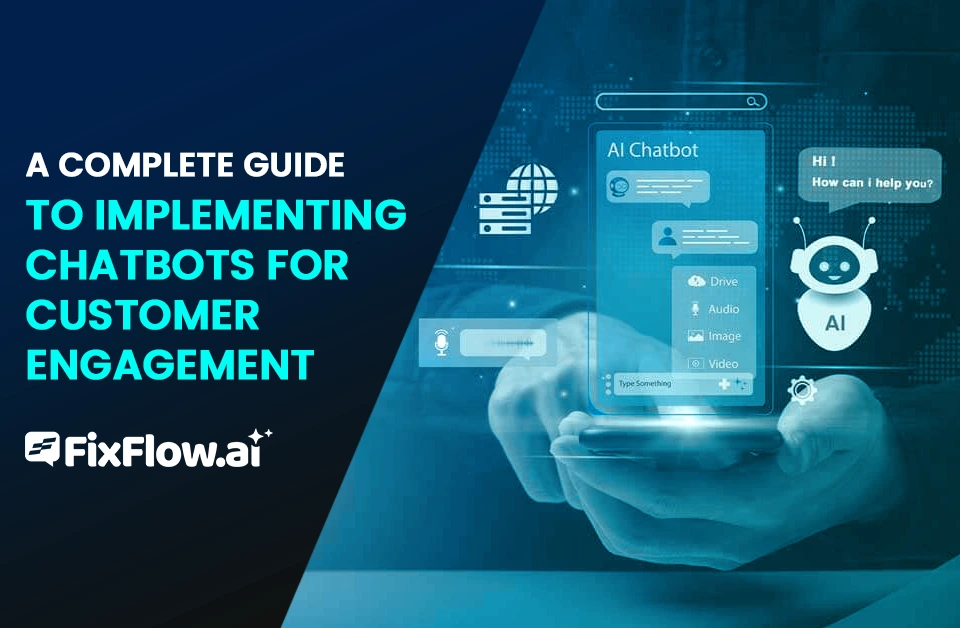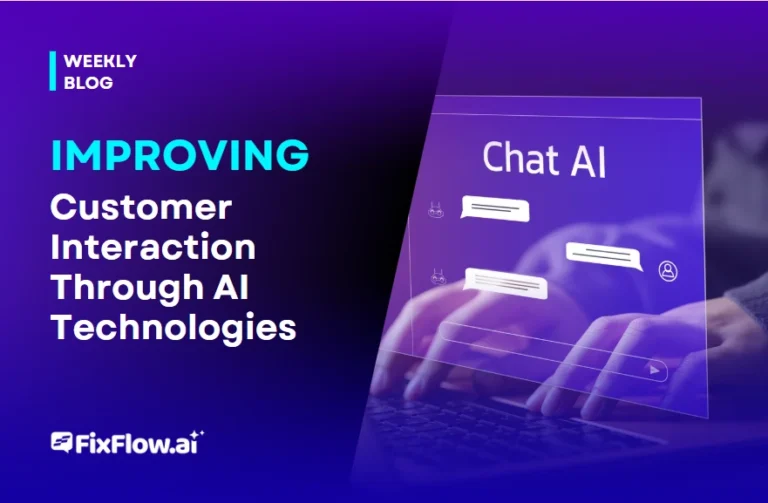A Complete Guide to Implementing Chatbots for Customer Engagement
Implementing chatbots for customer engagement can transform your operations. They provide instant support, enhance personal interactions, and boost efficiency. Start by choosing a platform like Dialogflow, Chatfuel, or ManyChat that aligns with your needs, ensuring easy integration and scalability. Then, design engaging conversational flows by mapping common queries and using natural language processing. It’s essential to test and integrate your chatbot with existing systems, focusing on an omnichannel approach and seamless handovers. Finally, success can be measured by analyzing key performance indicators like response time and conversion rates. By following these steps, you’ll set the stage for deeper insights.
Understanding Chatbot Benefits
Chatbots offer businesses a unique opportunity to enhance customer engagement by providing instant support and personalized experiences. By integrating customer service automation, chatbots can handle inquiries around the clock, guaranteeing your customers receive immediate assistance, even outside regular business hours. This automation not only boosts efficiency but also frees up your human resources to focus on more complex tasks that require a personal touch.
Incorporating AI-powered customer interactions into your strategy allows you to deliver more tailored experiences. AI-driven chatbots can understand and learn from each interaction, adapting to customer needs and preferences over time. This ensures that your customers feel valued and understood, leading to increased satisfaction and loyalty. Additionally, as these chatbots become more intelligent, they can handle a broader range of queries, reducing the need for human intervention.
Measuring chatbot effectiveness is crucial to confirm you’re achieving your goals. By setting key performance indicators (KPIs) like response time, customer satisfaction, and query resolution rate, you can assess how well your chatbot is performing. Regular analysis of these metrics enables you to refine and optimize your chatbot, continuously enhancing its effectiveness and ensuring it remains a valuable asset in your customer engagement strategy.
Choosing the Right Platform
Selecting the ideal platform for your chatbot is vital, as it directly impacts ease of use, integration capabilities, and overall scalability. With numerous options available, pinpointing the best chatbot platforms for businesses requires careful consideration. When looking into platforms like Dialogflow, Chatfuel, or ManyChat, assess how they align with your business needs.
The platform you choose should streamline the chatbot integration process, ensuring seamless connectivity with existing systems like CRM, helpdesk, or live chat software. It’s important to prioritize platforms that support omnichannel deployment, enabling your chatbot to function across various touchpoints such as websites, social media, and mobile apps.
Additionally, consider the AI chatbot deployment features the platform offers. Advanced platforms often provide robust AI capabilities, enhancing the chatbot’s ability to understand and respond to customer inquiries intelligently. Scalability is another key factor; your chosen platform should easily accommodate growth without significant overhauls.
Designing Conversational Flows
With your platform selected, it’s time to focus on crafting engaging conversational flows that guide users seamlessly through interactions. A solid chatbot workflow design is vital for guaranteeing that users have a smooth and intuitive experience. Start by mapping out common customer queries and anticipating potential follow-up questions. This helps in designing a flow that feels natural and keeps users engaged.
Incorporating natural language processing (NLP) in chatbots is essential to create human-like interactions. NLP allows your chatbot to understand and respond to various phrasings of the same query, enhancing user experience in chatbot engagement. It’s not just about understanding words but also the context, which makes conversations feel more genuine and less mechanical.
Your goal should be to make users feel as though they’re having a conversation with a knowledgeable friend. Test different dialogue styles to see which resonates best with your audience. Remember, clarity and brevity are key; users should never feel overwhelmed by too much information at once. Keep refining your design based on user feedback to ensure the chatbot not only meets but exceeds user expectations, creating a lasting positive impression.
Implementing and Testing
To guarantee your chatbot functions effectively, start by integrating it with your existing systems and conducting thorough testing with real users. A solid chatbot deployment strategy is essential for seamless operation. First, make sure the chatbot connects smoothly with your CRM, helpdesk, and any live chat software you use. This integration allows for a unified customer service experience and ensures data flows effortlessly between platforms.
When considering how to implement chatbots, focus on omnichannel deployment. This means your chatbot should be accessible across various platforms like your website, social media, and mobile apps. Such accessibility increases customer reach and engagement. As part of your chatbot setup guide, remember to map out the handover process between the chatbot and human agents. This ensures that complex issues can be escalated efficiently, maintaining customer satisfaction.
Testing is an important step in implementation. Start with small-scale testing, gathering feedback from real users to identify and fix any errors. Look for gaps in conversation flows and areas where the chatbot may not respond correctly. Continuously optimize its responses based on user interactions to improve accuracy and user experience. This iterative process makes your chatbot more effective over time.
Measuring Success and ROI
Evaluating your chatbot’s success and ROI involves analyzing key performance indicators like response time, customer satisfaction, and conversion rates. By focusing on these metrics, you can determine how effectively your AI chatbot for customer engagement is performing. Faster response times mean more satisfied customers, while higher conversion rates indicate successful interactions that drive business goals. It’s important to track these KPIs consistently to assess how well your chatbot is automating customer service and enhancing user experiences.
To measure ROI, compare the costs of implementing and maintaining your chatbot with the savings and revenue it generates. Consider factors such as reduced customer service workload, increased sales, and improved customer retention. This will give you a clear picture of your chatbot’s financial impact.
In addition, following chatbot configuration best practices is essential for optimizing performance. Regularly update your chatbot’s knowledge base, monitor user interactions, and refine its responses based on feedback. Continuously enhancing your chatbot’s capabilities ensures it remains a valuable asset for your business. By leveraging these strategies, you can maximize the effectiveness of your chatbot and guarantee it contributes positively to your overall business objectives.
Frequently Asked Questions
How Do Chatbots Handle Complex Queries Beyond Their Programmed Capabilities?
When you encounter complex queries that your chatbot can’t handle, it’s important to have a seamless handover to human agents. Make sure your chatbot can recognize when it’s out of its depth and smoothly transfer the conversation. Incorporating Natural Language Processing (NLP) helps, but human support is vital for those intricate questions. Balancing automation and human intervention guarantees customers receive the assistance they need without frustration.
What Are the Common Security Concerns Related to Chatbot Interactions?
When you’re using chatbots, security concerns are a significant deal. You worry about data breaches, as chatbots can handle sensitive information like personal details and payment data. There’s also the risk of unauthorized access and phishing attacks. You’ve got to make sure that any data collected is encrypted and stored securely. Implementing strict access controls and regularly updating security protocols is essential to keep your chatbot interactions safe and secure.
How Can Chatbots Be Personalized for Individual Customer Experiences?
You can personalize chatbots for individual customer experiences by leveraging data like past interactions, purchase history, and preferences. Use this information to tailor responses and recommendations. Implement AI to recognize patterns and predict needs, making interactions feel more natural and relevant. Don’t forget to incorporate user feedback for continuous improvement. Customizing the bot’s tone and language to match your brand and audience also enhances personalization.
What Are the Ethical Considerations When Deploying Chatbots in Customer Service?
When deploying chatbots in customer service, you’ve got to ponder several ethical implications. Make certain your chatbot respects user privacy by adhering to data protection laws and being transparent about data collection. It’s essential to guarantee the chatbot doesn’t mislead customers into thinking they’re interacting with a human. Additionally, maintain fairness and avoid bias in responses. Always provide an option to escalate to a human agent for complex issues.
How Do Businesses Ensure Chatbots Comply With International Data Privacy Laws?
You need to guarantee that your chatbots comply with international data privacy laws by first understanding the regulations like GDPR, CCPA, and others relevant to your audience. Implement strict data encryption and anonymization practices, and always obtain user consent before collecting data. Regularly update your privacy policies and train your team about compliance. Use AI tools to monitor compliance and stay informed about any changes in privacy laws.







